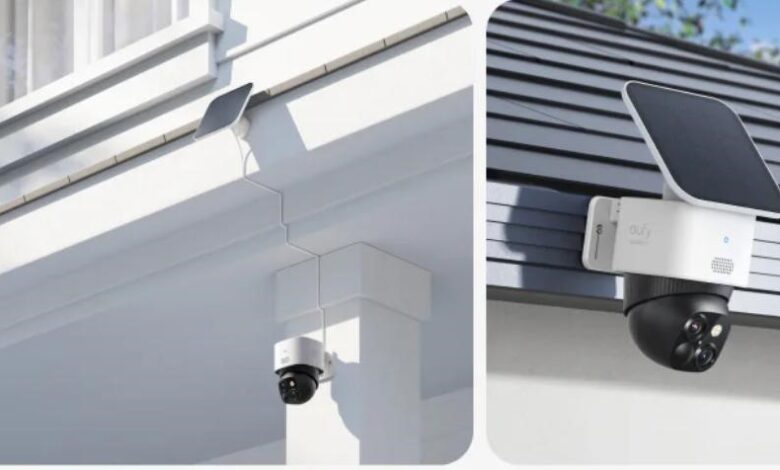Are Wireless Security Cameras the Future of Home Security?

Imagine having the ability to monitor your home from anywhere in the world, at any time. Wireless security cameras offer this feature and more. By eliminating the need for extensive wiring, they provide ease of installation and flexibility. As technology evolves rapidly, wireless security cameras are becoming an increasingly popular choice for homeowners. This blog explores why they are gaining traction, how secure they are, and what future trends to expect.
Why Are Wireless Security Cameras Gaining Popularity?
Wireless security cameras are quickly becoming a go-to solution for homeowners who want convenience, flexibility, and reliable surveillance. Let’s take a closer look at the factors driving their popularity.
The Convenience and Flexibility of Wireless Cameras
Wireless security cameras offer unparalleled convenience. They can be installed in virtually any location, without the need for drilling holes or running wires through walls. This flexibility allows homeowners to monitor multiple areas of their property more effectively. Additionally, these cameras can be easily relocated, making them ideal for renters or anyone who may move frequently.
Advancements in Wireless Technology
Continuous advancements in wireless technology have significantly boosted the functionality of these devices. Enhanced battery life, longer range, and faster data transmission are some of the key improvements. With features like motion detection, real-time alerts, and integration with smart home systems, wireless security cameras provide robust home security solutions. These technological advancements are making them an attractive option for many users.
See also: Why Using Technology to Spy on Home-Working Employees May Be a Bad Idea?
Cost-Effectiveness and DIY Appeal
Installing wired security systems can be labor-intensive, requiring professional help, which adds to the cost. In contrast, wireless security cameras often come with a DIY-friendly setup, reducing installation costs. Many models are affordable, providing excellent value for money. Users can save on initial installation costs and enjoy a high level of security without breaking the bank.
How Secure Are Wireless Security Cameras?
While wireless security cameras offer numerous benefits, it’s essential to consider how secure they are. Let’s dive into the various aspects of their security features, the risks involved, and how you can safeguard your privacy.
Data Encryption and Security Measures
Most modern wireless security cameras utilize strong data encryption to protect footage from unauthorized access. This includes features like WPA2 encryption for Wi-Fi connections and end-to-end encryption for data stored on the cloud. By employing these security measures, users can better safeguard their privacy and ensure that their surveillance data is not compromised.
Risks of Hacking and How to Mitigate Them
Despite these security measures, wireless cameras are not entirely immune to hacking risks. Cyber attackers can potentially access the video feed or disable the camera. However, taking proper precautions can mitigate these risks. Using strong, unique passwords, enabling two-factor authentication, and keeping firmware updated are essential steps to enhance security.
Best Practices for Securing Wireless Cameras
To ensure the best protection, users should prioritize regular software updates, as these often include critical security patches. Avoiding public Wi-Fi for camera access can also add a layer of security. Selecting cameras from reputable manufacturers who offer robust customer support and regular updates can make a significant difference in maintaining a secure system.
Future Trends in Wireless Security Cameras
As technology continues to evolve, wireless security cameras are bound to become even more advanced. Here’s a glimpse into the exciting features we can expect in the near future.
The Role of Artificial Intelligence in Security
Artificial Intelligence (AI) is set to revolutionize home security by enhancing the capabilities of wireless cameras. AI can improve motion detection, enabling cameras to distinguish between people, animals, and other objects. This reduces false alarms and increases efficiency. Facial recognition technology can also be integrated, allowing for personalized alerts and better threat assessment.

Improving Video Quality and Smart Integration
The future will likely see further improvements in video quality, with 4K resolution becoming a standard feature. Enhanced night vision and wide-angle lenses will provide clearer and more comprehensive surveillance. Additionally, better integration with smart home devices means users can create an interconnected security ecosystem, including smart locks, lights, and alarms, all working seamlessly together.
Cloud Storage vs. Local Storage: What’s Next?
The debate between cloud and local storage continues to evolve. Cloud storage offers the advantage of remote access and often includes redundancy features to prevent data loss. However, local storage provides a more private option, reducing the risk of data breaches. Innovations like hybrid systems, which combine both storage methods, may offer the best of both worlds, providing robust security and convenience.
Conclusion
Wireless security cameras are indeed shaping the future of home security. Their convenience, technological advancements, and cost-effectiveness make them appealing to many homeowners. While security concerns exist, proper measures can mitigate risks. Looking ahead, advancements in AI, video quality, and storage solutions will continue to enhance these systems. Investing in a wireless security camera not only safeguards your home but also keeps you at the forefront of security technology.




